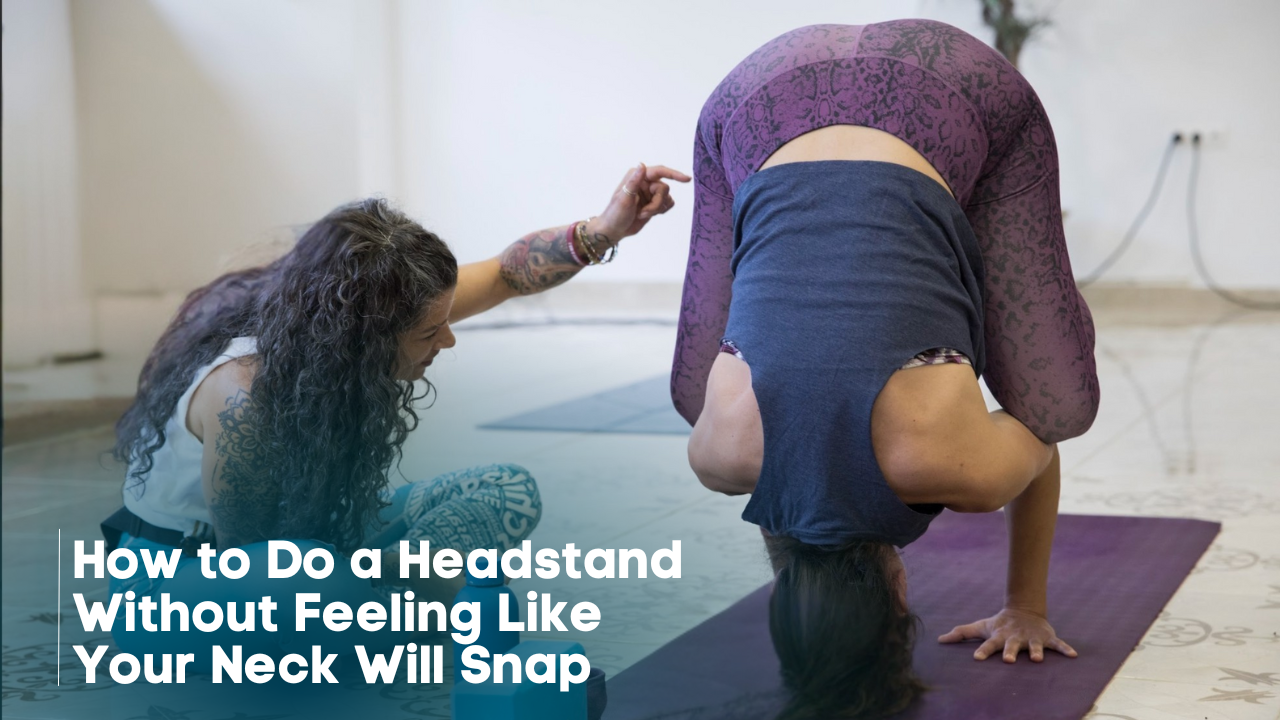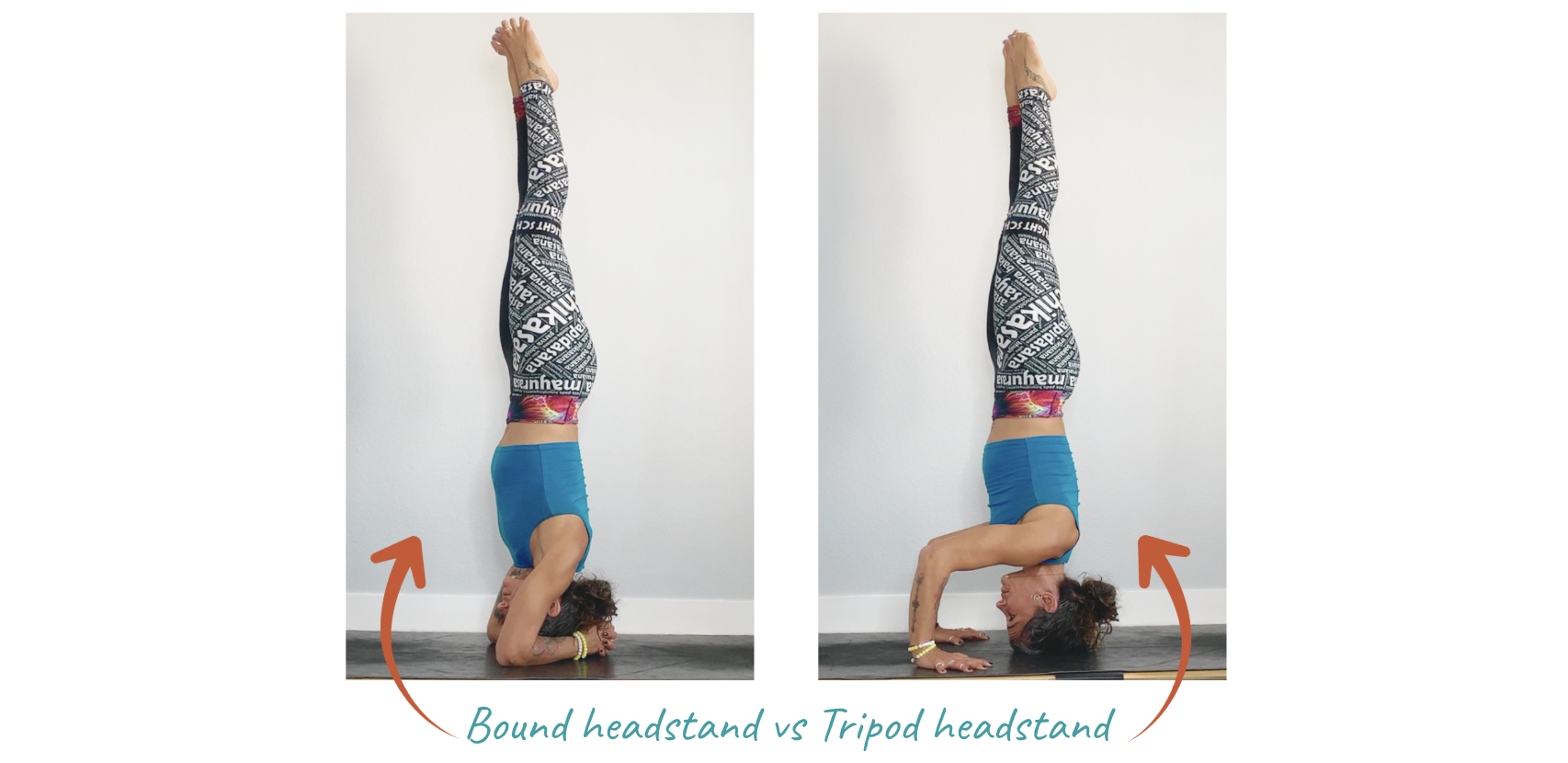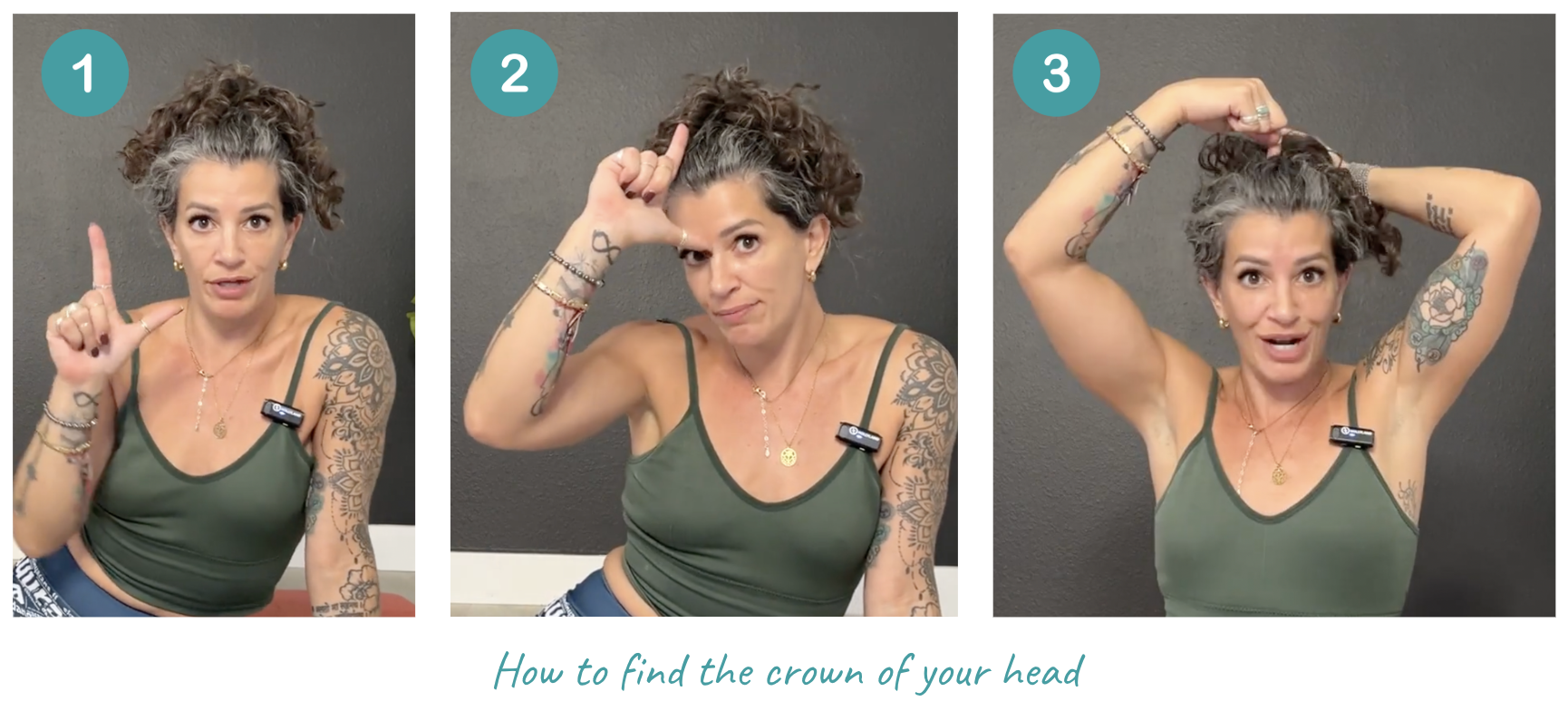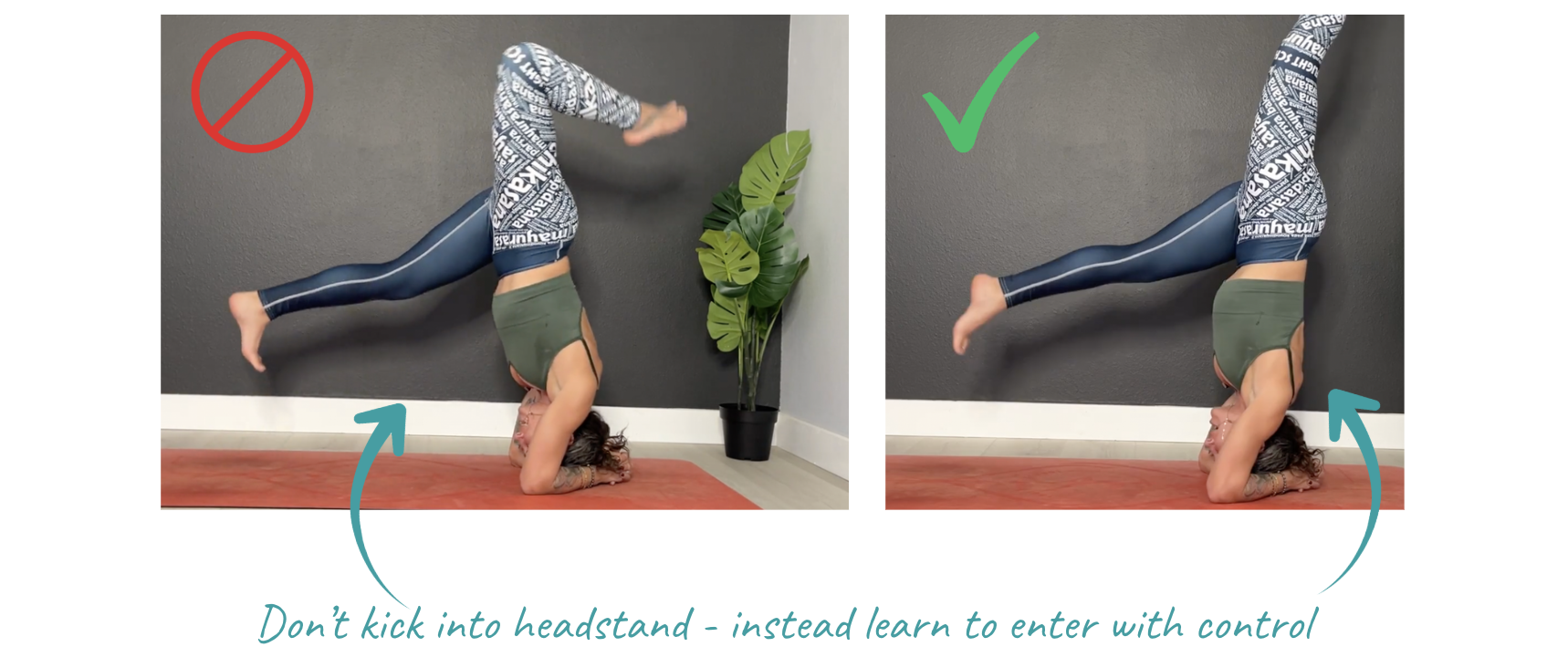How to Do a Headstand Without Feeling Like Your Neck Will Snap

Ever peeked at a headstand and thought, “Cool… but my neck might actually snap if I try that”?
I hear this at least three times a week from students. The fear usually goes like this: “I want to practice headstands, but my neck can’t handle it.”
And honestly, it makes sense. If you haven’t learned how to warm up properly, stack your joints correctly, or lift your feet with control, it can feel risky.
Let’s get one thing straight: headstands themselves are not dangerous. The problem isn’t the pose, it’s how we approach it.
In this week's article, I’m breaking down three key tips you need to know to practice headstand safely. You’ll learn which variations put less weight on your head, where your head should actually rest on the floor, and why controlled lifts beat flailing any day.
Tip #1: Not All Headstands Are Created Equal
One of the biggest reasons people panic about their necks is the idea that all headstands dump your entire body weight onto your head. They don’t. Different headstand variations distribute weight very differently, and choosing the right one can make the difference between “my neck hates me” and “oh wow, this actually feels okay.”
Bound Headstand (Forearms on the floor)
This is the version I recommend for almost everyone who’s nervous about neck pressure. With both forearms grounded, about 70 percent of your weight is supported by your arms, not your head. Your neck gets only a small share of the load, making this variation far safer when you’re building confidence. (If you're screaming, "But Nat!! My Shoulders are too tight for bound headstand, you need to check out this blog article!)
Tripod Headstand (Hands on the floor)
This version puts more weight into your head and neck. It’s not inherently unsafe, but if you’re just starting or worried about your neck, this isn’t the best place to begin.

Your choice of headstand matters. If you’ve tried one version, hated it, and assumed headstands “aren’t for your body,” you may have just started with the wrong variation.
Tip #2: Be Aware of Which Part of Your Head Goes on the Floor
When teachers say, “Place the crown of your head on the floor,” most students just guess. The exact spot matters because it changes your spinal alignment and load distribution. Placing your forehead on the floor yanks your neck backward, and being too far back on your skull crunches your chin towards your chest. Any angle that’s not straight down your spine puts unnecessary stress on your neck.
Here’s how to find the crown:
- Make an “L” shape with your thumb and index finger.
- Place your thumb between your eyebrows.
- Let your index finger point straight back toward the top of your head.
Where your index finger lands? That’s the crown: not your forehead, not the back of your skull. With your crown in the right spot, your headstand will feel stable instead of scary.
Tip #3: Never Kick Into a Headstand
Let’s be real: kicking your legs up into a headstand might feel like the fastest shortcut...but it’s also the easiest way to lose control and stress your neck. Momentum is sneaky. It can push your weight in the wrong direction, jamming your cervical spine, wobbling your shoulders, and leaving you bracing for a crash. This is why so many people blame headstand for neck pain: the pose isn’t the problem, how we enter it is.
The safer (and honestly more satisfying) way is to lift with intention. Think of it like a slow-motion magic trick: your core engages, your shoulders, forearms and/or hands take the weight, and your legs rise smoothly, guided by leverage rather than momentum. Your neck doesn’t have to carry the load...it’s just along for the ride.
(psst: If you want to learn how to enter your headstand with control, my signature program Yogi Flight School is exactly what you need! Check out all the details of Yogi Flight School here!)
When you stop thinking of headstand as a “kick and hope for the best” stunt and start lifting with intention, the pose transforms, and your neck will thank you.
Putting It All Together: How to Practice Headstand Safely
Headstands aren’t inherently dangerous on their own. The risk comes from rushing, flailing, or ignoring the fundamentals.
Follow these three tips:
- Choose a variation that distributes weight safely.
- Place your crown correctly on the floor to protect your neck.
- Avoid kicking into the pose.
Do these, and you’ll unlock the freedom and joy of inversions without ever stressing your neck. Your headstands will go from “scary” to “doable,” and you’ll start moving with confidence rather than caution.
Want to see all of this in action?
Check out my YouTube video where I break all of this (and more) down!

